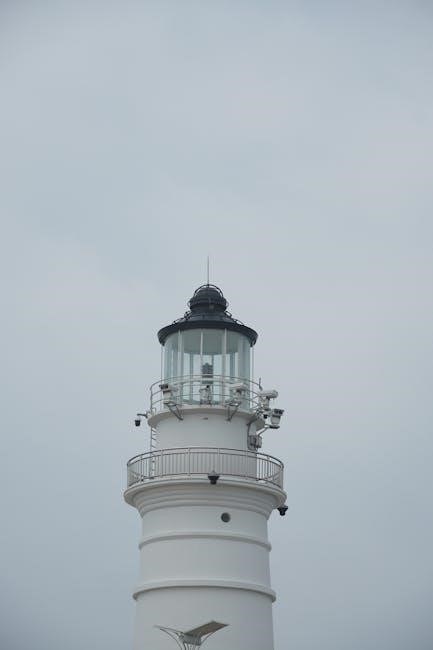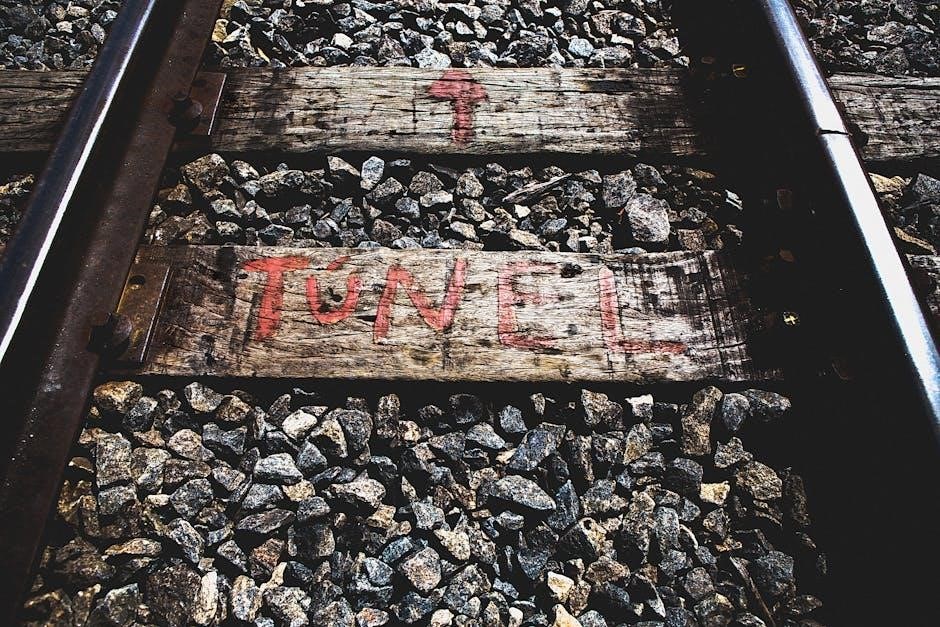Guide railing provides safety and security, with options available for decking and stairs, in various heights, including 36 and 42 inches, to ensure compliance with regulations and guidelines for installation purposes always.
Overview of Guide Railing Importance
Guide railing is a crucial component of any deck or stair system, providing a safe and secure barrier to prevent accidents and injuries. The importance of guide railing cannot be overstated, as it plays a vital role in ensuring the well-being of individuals using the deck or stairs. According to various guidelines and regulations, guide railing is essential for decks and stairs, particularly in commercial and multifamily properties. The installation of guide railing is not only a safety measure but also a legal requirement in many states. A well-designed and properly installed guide railing system can help prevent falls and other accidents, reducing the risk of injury or death. Furthermore, guide railing can also enhance the aesthetic appeal of a deck or stair system, adding a touch of elegance and sophistication to the overall design. Overall, the importance of guide railing lies in its ability to provide a safe and secure environment for individuals to enjoy their outdoor spaces. Guide railing is essential for any deck or stair system, and its importance should not be overlooked. Proper installation and maintenance are key to ensuring the effectiveness of guide railing.
Types of Guide Railings Available
There are various types of guide railings available, catering to different needs and preferences. Trex railing panels, for instance, are a popular choice for decking and stairs, offering a range of styles and designs. These panels are available in 36 and 42 heights, making them suitable for various applications. Additionally, guide railings can be made from different materials, such as wood, metal, or composite materials, each with its own unique characteristics and benefits. Some guide railings feature a traditional design, while others have a more modern and sleek appearance. The type of guide railing chosen depends on factors such as the intended use, budget, and personal taste. Guide railings can also be customized to fit specific requirements, ensuring a perfect match for any deck or stair system. With so many options available, individuals can select the ideal guide railing to suit their needs and enhance the overall safety and aesthetic appeal of their outdoor space. Guide railings come in a variety of styles and materials to suit different needs.

Installation of Guide Railings
Guide railing installation requires careful planning and execution, following specific procedures, and using proper tools and materials for successful completion always and ensuring safety guidelines.
Pre-Installation Procedures and Safety Measures
Before beginning the guide railing installation process, it is essential to familiarize yourself with the procedures and safety measures to ensure a successful and safe installation.
The installation manual should be read in its entirety to understand the requirements and guidelines for the installation.
Proper safety equipment, such as safety glasses, should be worn at all times during the installation process to prevent injuries.
Additionally, it is crucial to check with local building departments for specific guidelines and limitations that may apply to the installation.
By following these pre-installation procedures and safety measures, you can ensure a safe and successful guide railing installation.
The importance of proper planning and preparation cannot be overstated, as it can help prevent accidents and ensure compliance with regulations.
Guide railing installation requires attention to detail and adherence to safety protocols to ensure the well-being of individuals involved in the process.
Overall, pre-installation procedures and safety measures are critical components of a successful guide railing installation.
Proper safety equipment and planning can help prevent injuries and ensure a successful installation.
Local building departments can provide valuable guidance on specific requirements and limitations.
By prioritizing safety and planning, you can ensure a successful guide railing installation.
Tools and Materials Needed for Installation
To install guide railing, various tools and materials are required, including screws, lags, and wall brackets.
The type and quantity of materials needed may vary depending on the specific installation requirements.
It is essential to ensure that the correct size and type of fasteners are used to secure the guide railing in place.
Proper under-blocking is also necessary to provide additional support and stability to the guide railing.
A measuring tape and level may be needed to ensure accurate measurements and proper alignment during installation.
Other tools, such as a drill and screwdriver, may also be required to complete the installation.
The guide railing manufacturer may provide a list of recommended tools and materials, which should be followed to ensure a successful installation.
By having all the necessary tools and materials on hand, you can streamline the installation process and ensure a professional-looking finish.
The right tools and materials can make a significant difference in the quality and safety of the guide railing installation.
Proper planning and preparation are crucial to ensure that all necessary tools and materials are available.

Design Considerations for Guide Railings
Guide railings require careful design considerations for safety and functionality purposes always ensuring compliance with regulations and guidelines for installation and use effectively.
Height and Dimensional Characteristics of Guide Railings
Guide railings have specific height and dimensional characteristics that must be considered during installation, with options available for decking and stairs, including 36 and 42 inches, to ensure compliance with regulations and guidelines.
The height of the guide railing is a critical factor in determining its effectiveness, with most states requiring a minimum height of 36 inches for single-family properties and 42 inches for commercial and multifamily properties.
The dimensional characteristics of guide railings, including the width and material, also play a crucial role in ensuring safety and functionality, with different materials and designs available to suit various needs and applications.
Proper installation and maintenance of guide railings are essential to ensure their longevity and effectiveness, with regular inspections and repairs necessary to prevent damage and wear.
Overall, the height and dimensional characteristics of guide railings are essential considerations in ensuring safety and compliance with regulations, with careful planning and installation necessary to achieve optimal results.
Guide railings are an essential component of any deck or stair system, providing a safe and secure barrier to prevent accidents and injuries.
Conditions Warranting Guide Rail Installation
Conditions that warrant guide rail installation include steep slopes, sharp curves, and hazardous terrain, where the risk of accidents and injuries is high.
Guide rails are also necessary in areas with high foot traffic, such as commercial and multifamily properties, to provide a safe and secure barrier.
Additionally, guide rails are required in areas where there is a drop-off or a change in elevation, such as stairs and decking, to prevent falls and accidents.
The installation of guide rails is also warranted in areas where there are obstacles or hazards, such as near water or on uneven terrain.
In general, guide rails are necessary in any situation where there is a risk of accident or injury, and their installation is crucial to ensuring safety and preventing harm.
The specific conditions that warrant guide rail installation may vary depending on the location and the type of terrain, but the overall goal is to provide a safe and secure environment for everyone.

Maintenance and Safety Tips
Regular inspections and maintenance ensure guide railing safety and longevity always with proper care and attention to details and guidelines.
Common Mistakes to Avoid in Guide Railing Installation
To ensure a successful guide railing installation, it is crucial to avoid common mistakes that can compromise safety and longevity. One of the most significant errors is improper measurement and sizing of the railing components. This can lead to a weak and unstable structure that fails to provide adequate support and protection. Another mistake is inadequate securing of the railing to the deck or stair frame, which can cause the railing to become loose or detached over time. Additionally, using incorrect or low-quality materials can also lead to premature wear and tear, and even failure of the railing system. Furthermore, neglecting to follow local building codes and regulations can result in a non-compliant installation that poses serious safety risks. By being aware of these potential pitfalls, installers can take necessary precautions to avoid them and ensure a safe and reliable guide railing installation. Proper planning and attention to detail are essential to a successful installation.
Long-Term Maintenance and Inspection of Guide Railings

Regular maintenance and inspection of guide railings are essential to ensure their continued safety and effectiveness. Over time, guide railings can be subject to wear and tear, damage from environmental factors, and degradation of materials. To prevent these issues, it is necessary to conduct periodic inspections to identify any signs of damage or deterioration. This can include checking for loose or corroded fasteners, damaged or rotten wood, and excessive wear on moving parts. Any issues that are identified should be addressed promptly to prevent further damage and ensure the continued safety of the guide railing. Additionally, cleaning and lubricating moving parts can help to maintain their functionality and extend their lifespan. By prioritizing long-term maintenance and inspection, guide railings can continue to provide reliable support and protection for years to come, reducing the risk of accidents and injuries. Proper maintenance can also help to extend the lifespan of the guide railing.
